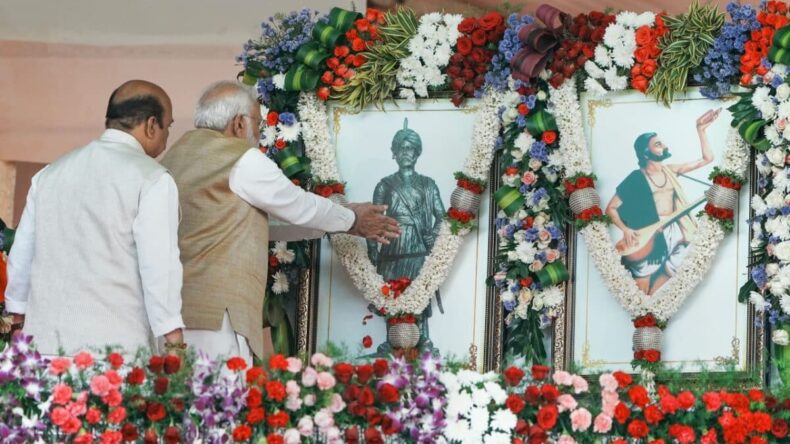In Karnataka Today Prime Minister Narendra Modi unveiled the 108 feet tall statue of Nadaprabhu Kempegowda-the 16th century leader who founded Bengaluru 511 years ago at Bengaluru airport.

As per world records, it is the tallest bronze statue of a founder of a city, it is called the Statue of Prosperity which symbolizes his vision of a global city. According to the new reports the statue was estimated to cost about 850 million rupees. This plan was under the state government which had funded about q billion for the statute and a theme park.
In order to mark the progress of Bengaluru the state minister has decided to call it the ‘statue of prosperity. The city of Bengaluru is an abode to some of the country’s biggest startups and established companies so-called the Silicon Valley of India.
Ram V Sutar who was the sculptor of the Statue of Unity – the statue of freedom fighter Sardar Vallabhbhai Patel – the tallest in the world of its kind, has sculpted the statute of Nemi Prabhu Kempegowda.
Read More: Bengaluru’s Shivananda Circle flyover will be completely operational, BBMP personnel
Kempegowda is a highly respected figure of Karnataka. He was a part of the Vijaynagar empire which lavishly ruled different parts of southern India from the 14th to 17th century. According to the historian, Suryanath Kamath historical shreds of evidence suggest that he had ruled from 1513 to 1569 over areas that cover modern-day Bengaluru.
A descendant of the Morasu Gowda lineage, he is considered to be the most educated and successful diplomatic leader of his time. He displayed his leadership skills while in gurukul at Aivarukandapura, a village near Hesaraghatta.
It is believed that he got the idea of building Bengaluru while on a hunting expedition towards Shivanasamudra with his minister Veeranna and advisor Gidde Gowda. He wanted the city to have a fort, cantonment, temples, water reservoirs, and a humble abode for people of all professions and walks of life. He ruled the Sivaganga principality near the Pune- Bengaluru highway.

After seeking permission from the Vijaynagar empire he built the Bengaluru fort and the town in 1537 AD and shifted his capital from Yelahanka to Bengaluru.
He is considered to be a social reformer as he prohibited the custom of amputating the last two fingers of the left hand of women who are unmarried and participated in the ‘bandi devaru’ custom of the Morasu Vokkaliga community. He was multilingual and even authored the Gangagaurivilasa a yakshagana traditional play.
This statue has been unveiled at a time when the state is about to host state assembly elections. It can be a political strategy yet it is a welcome step for the people of the state.
Read More: A breakthrough innovation in tailored cancer medicine












